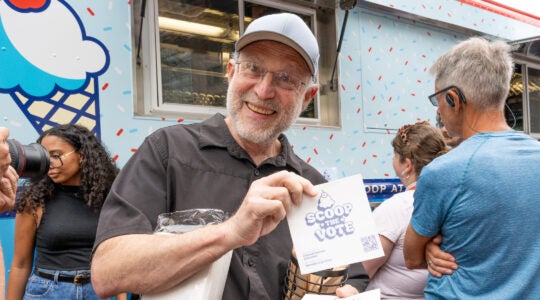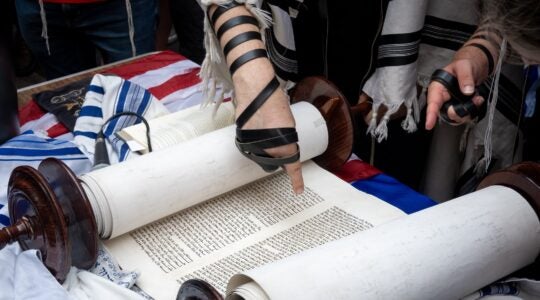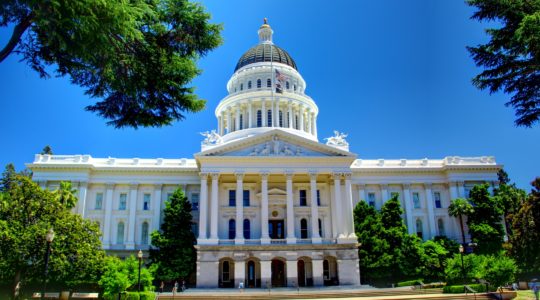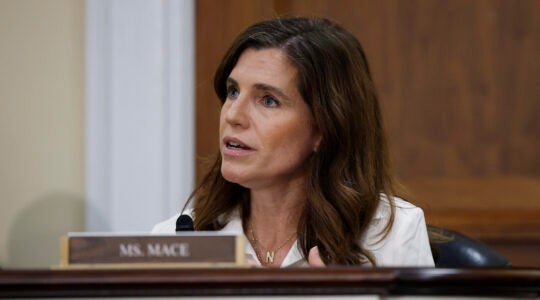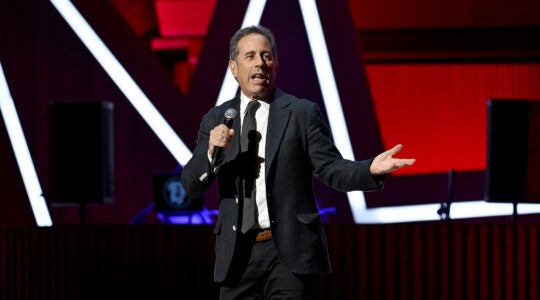SAN FRANCISCO (JTA) – When 24-year-old Adina Allen sits down Jan. 22 to the Tu B’Shevat seder she helped organize for young Jews in the San Francisco Bay Area, she and the others at her table will be celebrating the connection between environmental activism and Jewish teachings.
It’s a logical connection for a holiday known as “the New Year of the Trees.”
Although it was created by the ancient Israelites as a dating device to determine which fruit trees were old enough to be tithed in a given year,Tu B’Shevat of late has taken on a more overt ecological role, from Jewish National Fund tree plantings in Israel to synagogues and JCCs sponsoring composting lessons or cleaning garbage from riverbanks.
But most of the focus has been on families with young children. Quite recently, young Jews in their 20s and 30s have seized upon the holiday, running Tu B’Shevat seders that are more explicit both in their call to environmental activism and their reliance on Jewish text.
“It’s a holiday that’s easy to get behind, especially for our generation,” says Josh Miller, 33, who with Allen is part of the core group of Jewish activists that put together this year’s first communitywide Bay Area Tu B’Shevat seder specifically for young adults.
“The ideas of environmentalism speak to our personal spiritual values. So when there’s a Jewish celebration that resonates with those values, it’s a home run.”
Miller used to run Tu B’Shevat seders as the director of Jconnect, a Hillel program for post-college Jews in Seattle.
Green Zionist Alliance director Noam Dolgin, 31, who puts on seders in several North American cities, says Tu B’Shevat has special meaning for the many young Jews like himself who are active in the environmental movement.
“We call it the High Holidays,” he says.
These seders are happening all over:
* In Chicago, Avodah: The Jewish Service Corps is running its first communitywide Tu B’Shevat seder in the co-op apartment shared by this year’s seven young program participants, all in their early 20s.
* The Tu B’Shevat seder in the Park Slope neighborhood of Brooklyn, held in Dolgin’s living room the past several years, is moving into a rented space to accommodate its growing numbers.
* The Kavod Jewish Social Justice House is having a seder in Boston for young adults with students from Hebrew College, alumni of the Conservative Yeshiva in Jerusalem and the Charles River Bet Midrash.
* In the Washington area, Shomrei Adamah will be co hosting a Tu B’Shevat seder and Shabbat celebration with Am Kolel, Jews United for Justice and the Shalom Center.
* Hazon, a New York-based Jewish environmental group, is running its sixth Tu B’Shevat seder at the JCC in Manhattan, and one is being organized for Limmud NY, a Jewish learning program taking place Jan. 17-20 in the Catskill Mountains.
Some of these seders are being run for the first time, and those that have been around longer report tremendous jumps in attendance this year.
That’s no coincidence, says Hazon’s director, Nigel Savage. He says a perfect storm in popular consciousness has occurred in the past 12 months, fanned by the fallout from Hurricane Katrina and the popularity of Al Gore’s film “An Inconvenient Truth.”
“We’ve passed the tipping point in our consciousness of global climate change and food, and the way we celebrate Tu B’Shevat will change, too,” Savage says.
Tu B’Shevat appeals to younger Jews, organizers say, because unlike most other Jewish holidays, it has no set rituals beyond the four cups of wine representing movement through the four kabbalistic worlds and is not halachically time bound. That leaves lots of room for creativity.
“Part of what’s appealing is that it allows people to come together with food and wine and create community,” says Rabbi Eve Ben-Ora of the Jewish Community Center of San Francisco, whose young adult group The Hub is a co-sponsor of the Bay Area seder. “It gives them a way to connect to their Jewish identity without a lot of heavy religious overtones.”
Allen, the assistant editor of Tikkun magazine, points out a more practical consideration.
“People don’t associate it with going home to their families, so 20s and 30s who don’t live at home” are a ripe audience for these communal celebrations, she says..
Some organizers are taking advantage of the fact that Tu B’Shevat falls this year on Martin Luther King Day.
Emily Rosenberg, the site director for Avodah’s service program in Chicago, says that’s why they decided to hold a seder this year for the first time.
“We’ll relate Tu B’Shevat to issues of environmental justice and environmental racism,” she explains. “Who benefits from the growth of trees? Why does toxic waste impact low-income people more than others?”
Many organizers are using the holiday to advocate for organic food and locally grown produce, favorite causes of the Jewish food movement. Savage says that at the Hazon seder, along with the “seven species” mentioned in the Torah as native to the land of Israel, they will serve winter produce indigenous to North America and discuss “why, as Jews, we are committed to Israel and to local organic produce.”
Most of the seders are kosher, even if few of those attending keep that mitzvah – it’s a matter of Jewish identity building, organizers explain.
The San Francisco seder is calling itself eco-kosher, meaning the food served was sustainably grown and produced in a socially just manner by workers who receive a living wage. That, too, combines progressive politics with religious imperative, Ben-Ora explains.
“Eco-kashrut is not under the auspices of the Orthodox rabbinate,” she says. “It allows people to say more loosely what it means while still maintaining an elevated sense of awareness of the food we consume,” which is an important tenet of Jewish tradition.
Miller expects about 100 attendees at $10 to $12 each – $2 back for those who bring their own cup and plate to reduce waste.
“It seems weird to eat kosher food off Styrofoam plates using plastic spoons,” he says.
Some of the organizers say that what distinguishes their seders from those run by young activist Jews 30 years ago is that the 1970s-era celebrations were focused mainly on political and environmental causes, while today’s seders include much more Jewish religious content.
“I have a feeling that my parent’s generation held Freedom Seders and Tu B’Shevat seders as secular events, and my friends and I are holding them as religious events,” says Margie Klein, the 28-year-old founder of Kavod House,
Klein was referring to the Martin Luther King Jr. memorial Passover seder written by Shalom Center founder Rabbi Arthur Waskow in 1969 that in later years morphed into seders supporting liberation for various oppressed groups.
The increased religious tie-in “resonates with people’s growing interest in Jewish mysticism, Chasidism and Jewish spirituality in general,” she says.
If the religious overtones of these new seders are strong, the call to activism is even stronger.
Many of the organizers are alumni of Jewish social service programs such as Avodah, the Adamah Jewish environmental fellowship, and projects run by Hillel and the American Jewish World Service. They have practical experience they are eager to tie to the holiday.
So while “traditional” Tu B’Shevat seders may ask celebrants to consider what they might do in the coming year to help protect the environment, the haggadah distributed this year by Philadelphia’s Shalom Center tells people to take out their pens and, at the seder table, write letters to lawmakers.
“As we drink the second cup, we commit ourselves to keeping the ethical dimension of the global climate crisis at the center of conversation and legislation,” the haggadah reads, before instructing the seder guests to write to their senators supporting the Lieberman-Warner climate security bill expected to come up this year.
Rabbi Jeff Sultar, the haggadah’s author and director of the Shalom Center’s Green Menorah campaign, has run activist seders, but says this marks the first time he is explicitly tying the holiday to global climate change.
The Green Menorah campaign is asking Jews to bring potted trees to their nearest Environmental Protection Agency office on Tu B’Shevat to protest the agency’s refusal this year to allow states to set their own stricter controls on CO2 emissions from cars.
Protests are already set for EPA offices in Philadelphia and Chicago, with a contingent from a Conservative congregation in Caldwell, N.J., making the trek to the agency’s New York City headquarters. The groups say they will hold actual seders on the steps of those office buildings, with four cups of grape juice standing in for the wine.
Sultar says a holiday that consciously combines Jewish tradition and environmental activism has the potential to bring young unaffiliated Jews back to Judaism.
That’s what happened to him. Two decades ago. he says, he was a “disaffected” Jew and environmental activist when he attended to his first Tu B’Shevat seder.
“When I found out the environmental concern I already had was grounded in my Jewish tradition, it opened the door for my return to Judaism and led to my becoming a rabbi,” he says.
Dolgin agrees, saying he knows “many” young, previously disaffected Jews who have become more interested in Judaism after attending events like a Tu B’Shevat seder.
“We teach Jews about the environment, but even more, we teach environmentalists about Judaism,” he says.
The holistic connection is vital for today’s young Jews, Klein says.
”For many us, we want Judaism to extend beyond Friday night, Saturday morning and the Jewish holidays to guide us in how we view the world and how we live our lives every minute of every day,” she says.
Sounds a lot like the traditional Jewish perspective, acknowledges Klein, a third-year rabbinical student at Hebrew College.
“Sometimes,” she says, “the best ideas are the oldest ideas.”
JTA has documented Jewish history in real-time for over a century. Keep our journalism strong by joining us in supporting independent, award-winning reporting.
